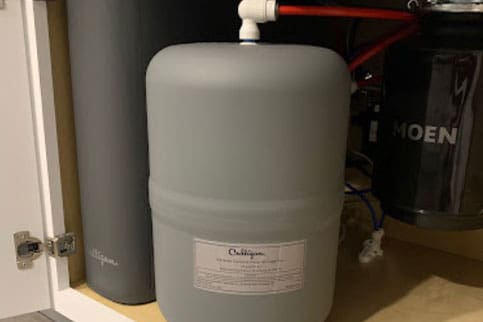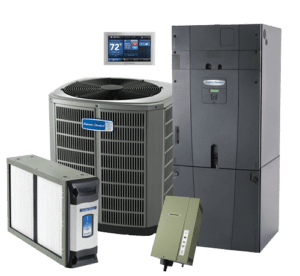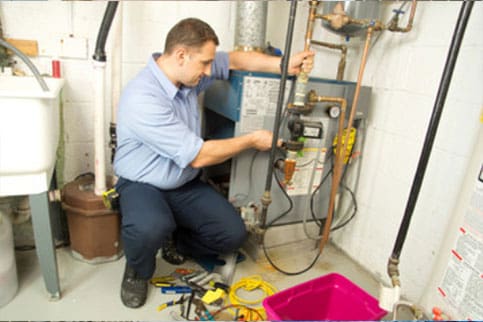
Recommendations On Selecting Appropriately Sized Equipment Based Upon Square Footage Calculations & Usage Patterns!
Selecting the right HVAC equipment can feel overwhelming, especially when faced with technical specifications and varying recommendations. However, choosing equipment that is appropriately sized for your space is crucial for optimal comfort and efficiency. An improperly sized system can lead to issues like uneven temperatures, higher energy bills, and even premature equipment failure. This article aims to provide you with essential insights into how to select the right-sized HVAC equipment based on square footage calculations and usage patterns.
Understanding HVAC Sizing
Before diving into sizing methods, it’s important to understand why proper sizing matters. HVAC systems are designed to heat or cool a specific volume of air within a structure. If the system is too small, it will struggle to maintain comfortable temperatures, leading to constant operation and increased wear. Conversely, an oversized unit may cycle on and off too frequently, which can also result in inefficiencies and discomfort due to rapid temperature fluctuations.
Calculating Square Footage
The first step in determining the appropriate size for your HVAC system is calculating the square footage of the area you wish to condition. The process is relatively straightforward:
For example, if a living room measures 15 feet by 20 feet, its area is 300 square feet (15 x 20). If there are three other rooms measuring 150, 200, and 100 square feet respectively, you would add those areas together:

- Living room: 300 sq ft
- Room 1: 150 sq ft
- Room 2: 200 sq ft
- Room 3: 100 sq ft
Total = 300 + 150 + 200 + 100 = 750 square feet.
BTUs Explained
Once you have your total square footage calculated, understanding BTUs (British Thermal Units) becomes essential. A BTU represents the amount of energy required to raise the temperature of one pound of water by one degree Fahrenheit. When it comes to HVAC https://www.google.com/search?q=Tailored+Mechanical systems, BTUs indicate how much heating or cooling power a system provides.
A general rule of thumb for estimating BTUs needed per square foot in residential spaces is approximately 20 BTUs per square foot. For our example above:
750 sq ft x 20 BTU/sq ft = 15,000 BTUs.
This number serves as a tailoredmechanical.com starting point; however, several other factors will influence your final decision.
Factors Influencing HVAC Size
While square footage is crucial in determining equipment size, it’s not the only consideration. Here are several additional factors that affect how much heating or cooling power you need:
Ceiling Height
Higher ceilings increase the volume of air that needs conditioning. If your ceiling height exceeds eight feet—common in many homes—you may need to adjust your BTU calculations upward according to how much extra air volume exists.
Insulation Quality
Well-insulated homes retain heat more effectively than poorly insulated ones. If you have upgraded insulation or energy-efficient windows and doors, you might reduce your BTU requirements because less conditioned air will escape.
Climate Zone
This factor varies significantly by location. In hotter climates like Tucson during summer months, cooling capacity takes precedence over heating needs. Conversely, regions with colder winters will require more heating capacity.
Windows and Sun Exposure
Windows contribute significantly to heat gain during warm months and heat loss during cold months. South-facing windows receive more sunlight than those facing north; therefore homes with extensive window exposure might need additional capacity compared to homes with fewer windows.
Usage Patterns
Consider how often different spaces are used throughout the day or week. A guest room that sees infrequent use doesn’t require as much capacity as a family room where people gather regularly.
Sizing Methods: Manual J Calculation vs Rule-of-Thumb
You can choose between two main methods for sizing HVAC systems: Manual J calculation or rule-of-thumb estimates.
Manual J Calculation
This method involves a detailed analysis performed by an experienced HVAC contractor who considers all factors mentioned above along with local climate data for precise sizing recommendations. Although this option may cost more upfront due to professional consultation fees—it often pays off in long-term efficiency gains since it tailors solutions specifically for your unique situation.
Rule-of-Thumb Estimates
For DIY enthusiasts or those looking for quick answers without complicated calculations—using rules based on square footage can serve as an initial guide but remember these assumptions generally lack precision compared with comprehensive assessments provided by an expert contractor.
Seeking Professional Guidance from Local Contractors
When selecting new HVAC equipment—especially if you're considering installation in Tucson—working alongside knowledgeable professionals ensures you make informed decisions tailored toward local conditions while obtaining competitive quotes from various contractors within Arizona's robust market landscape allows homeowners access various options suited best their needs without overspending unnecessarily on underperforming units down line thus saving time money headaches later down road!
Common Mistakes When Sizing Equipment
In my years working in AC repair in Tucson and dealing with countless installations firsthand—it becomes evident many homeowners fall prey certain pitfalls regarding equipment sizing which ultimately compromise their comfort levels satisfaction overall experience! Here are some common missteps:
Ignoring Load Calculations
Failing to conduct load calculations leads individuals straight into oversizing their units resulting in unnecessary expenses wasteful electricity bills over time!
Choosing Price Over Efficiency Ratings
Opting solely based on price instead efficiency ratings usually backfires since low-cost units often lack durability longevity eventually costing more repairs replacements!
Neglecting Ductwork Considerations

Underestimating Future Needs
Plans expand families grow—don’t forget about potential future lifestyle changes when selecting sizes today!
Assuming One Size Fits All
Each space has distinct characteristics requiring customized solutions! Avoid generic models hoping they’ll suffice across diverse environments within same home!
The Importance of Regular Maintenance
After investing time energy resources finding perfect-sized unit installing professionally—don’t neglect routine maintenance after installation! Scheduling annual check-ups ensures optimal performance extends lifespan reduces risks unforeseen breakdowns mid-summer swelter! Simple tasks such as changing filters cleaning coils checking refrigerant levels go long way maintaining efficiency keeping comfort high throughout seasons ahead!
At this point it’s evident understanding nuances behind selecting correctly sized HVAC equipment offers tremendous advantages beyond mere convenience; proper assessment ultimately translates savings improved quality life enhanced well-being environment around us each day enjoying warmth coolness alike depending season dictates!
If you find yourself needing assistance navigating these complexities—I highly recommend reaching out local experts specializing HVAC repair Tucson who possess knowledge expertise help steer through intricate details making informed choices align best interests while maximizing investments made home comfort systems ensuring satisfaction lasts years come!